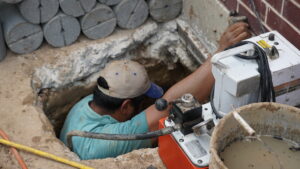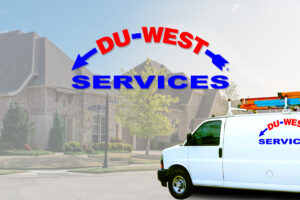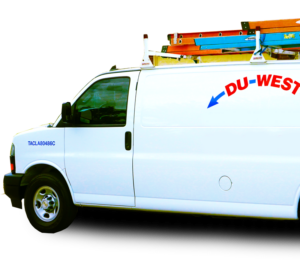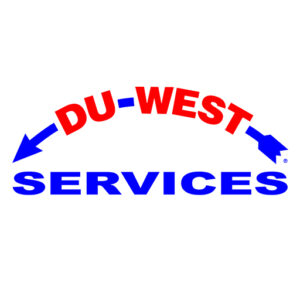Concrete Leveling Methods: Which One Is Right for You?
Concrete troubles can sneak up on you. You might have noticed it—a sidewalk slab dipping lower than others, a patio with a slight slope, or your garage floor uneven enough to make you pause. Dealing with uneven concrete can feel overwhelming, especially when it impacts safety and aesthetics. But here’s the good news, concrete leveling can restore balance without requiring a full replacement.
This blog dives into the methods of concrete leveling so you can make informed decisions for your home. Whether it’s your driveway, patio, or sidewalk, understanding your options will save you time, money, and future headaches.
What is Concrete Leveling, and Why Does it Matter?
Concrete leveling involves adjusting misaligned or sunken concrete slabs to restore their original position. It’s an alternative to replacing the entire slab, which can be expensive and time-consuming. Leveling your concrete can reduce tripping hazards, improve drainage, and enhance curb appeal.
But every concrete settlement is unique. Factors like the material beneath the slab, surrounding moisture levels, or the age of your property all contribute to how things shift. Thankfully, there are specific leveling methods to address these problems effectively.
1. Mudjacking
Mudjacking, often called slabjacking or concrete lifting, is one of the most established methods. Here’s how it works:
Process
A special slurry made of cement, sand, and water is pumped under the sunken slab through small, drilled holes. This slurry fills the gaps and forces the slab to rise until it levels out with surrounding areas. After the process is complete, the holes are patched up.
Pros
- Cost-effective: Compared to replacing the slab, mudjacking is typically much cheaper.
- Quick Results: Since the process doesn’t involve replacing concrete, repairs, and clean-up are done within hours.
- Eco-friendly: It reuses the soil underneath as part of the stabilization process.
Cons
- Less Durable: The material used in mudjacking may break down over time, particularly in wet or freeze-thaw conditions.
- Not Ideal for Load-Bearing Slabs: For garage floors or driveways where heavy loads are common, it might not provide long-lasting results.
Mudjacking is often an excellent solution for sidewalks, patios, and smaller residential slabs—perfect for fixes that don’t face constant stress from traffic or weight.
2. Polyurethane Foam Leveling
Polyurethane foam leveling is a newer and increasingly popular method. Unlike mudjacking, it uses a high-density foam to lift and stabilize sunken concrete.
Process
Small holes are drilled into the affected slab. Polyurethane foam is then injected into these holes. Within minutes, the foam expands, lifting the slab and stabilizing the area.
Pros
- Lightweight: The foam doesn’t add significant weight to the soil underneath, reducing the risk of further settlement.
- Durable: Polyurethane foam is moisture-resistant and durable, making it suitable for a wide range of climates.
- Precise: Its fast-expanding nature allows for more controlled and accurate leveling.
Cons

worker applies bitumen mastic on the foundation
- Cost: Polyurethane foam is pricier than mudjacking due to its advanced technology and materials.
- Access for Equipment: The specialized machinery required may make it impractical for smaller, less accessible jobs.
Polyurethane foam is a standout choice for driveways, industrial floors, or concrete that regularly supports heavier loads. Its precision also makes it valuable for patios or porches where visual appeal matters.
3. Self-Leveling Concrete
Self-leveling concrete, as the name suggests, is a type of cementitious material that flows easily and “levels itself” on application. It’s perfect for indoor work like basement floors or uneven garage surfaces.
Process
Preparation is key—all cracks or damaged areas are cleaned and filled first. The self-leveling compound is then poured onto the surface, and it spreads on its own to create a smooth, even layer.
Pros
- Smooth Finish: Leaves surfaces ready for flooring materials like tiles, hardwood, or epoxy coatings.
- Easy Application: The liquid-like consistency simplifies the leveling process.
Cons
- Not DIY-Friendly: Proper preparation and application require expertise.
- Limited Use: Primarily for indoor flooring or areas with no significant weight-bearing.
Self-leveling concrete works best when the goal is a flawless, ready-to-finish surface rather than lifting sunken outdoor slabs.
4. Grinding and Resurfacing
If your concrete slab is slightly uneven but structurally sound, grinding or resurfacing might do the trick. This method doesn’t raise the slab but rather removes the higher sections to create a flat surface.
Process
Special grinding tools (such as a concrete grinder) are used to shave down elevated areas of the slab. Resurfacing might follow grinding for a finished, polished look.
Pros
- Cost-Effective for Minor Issues: Great for small imperfections or trip hazards.
- Minimal Disruption: Doesn’t require invasive drilling or heavy machinery.
Cons
- Limited to Surface Problems: Won’t fix deeper settlement issues or significant sinking.
- May Remove Finishes: Any decorative finishes on your concrete will likely be ground away.
This method is excellent for addressing elevated sidewalk edges or smaller irregularities in patios and floors.
5. Replacement as a Last Option
Sometimes, the damage to your concrete is too extensive for leveling. If cracks run deep, the soil has deteriorated, or previous repairs failed, replacement might be unavoidable.
Process
The compromised slab is removed entirely, and the ground beneath is stabilized before pouring a new concrete layer.
Pros
- Guaranteed Long-Term Solution: If done properly, replacement ensures structural integrity for decades.
- Allows Redesign: You can change the layout or material to better suit your needs.
Cons
- Costly: Entire replacement is significantly more expensive than leveling methods.
- Time-Consuming: Removing and re-pouring concrete can take weeks, depending on the project.
Replacement should be considered a last resort, but it’s the best option when safety or stability is heavily compromised.
How Do You Know Which Concrete Leveling Method to Use?
Each of the methods has its time, place, and purpose. To choose the best approach, homeowners should consider:
Severity of the Problem
If the slab has sunk by inches, options like polyurethane leveling may be necessary. Minor unevenness? Grinding could suffice.
Budget
Mudjacking might be a feasible solution for smaller budgets, but polyurethane often delivers longer-lasting results.
Environment
Regions prone to excessive rainfall or freeze-thaw cycles might benefit from water-resistant options like polyurethane. Conversely, drier climates may do well with mudjacking.
Usage of the Area
For slabs bearing heavy weights, prioritizing durability is key, positioning polyurethane or even replacement as great options.
Consulting with a professional concrete contractor before making decisions is highly advised. They’ll assess soil conditions, the underlying problem, and the best methods for your needs.
Why Fixing Uneven Concrete is Worth It
Uneven or sunken concrete is more than an eyesore, it’s a safety risk and liability issue. Ignoring the problem can lead to injury, water pooling, or even greater foundational issues over time. Plus, a leveled and smooth outdoor space instantly boosts your property’s visual appeal.
By understanding the various methods and their advantages you can act with confidence. You’ll extend the life of your concrete at a fraction of the cost of full replacements.
Take the Next Step Toward Smooth, Safe Concrete
Is uneven concrete making your home feel less inviting? Whether it’s a sidewalk, patio, or garage floor you’re concerned about, addressing the issue now will save future stress and expenses. Research leveling professionals in your area to get expert help or explore consultations for your leveling needs.

